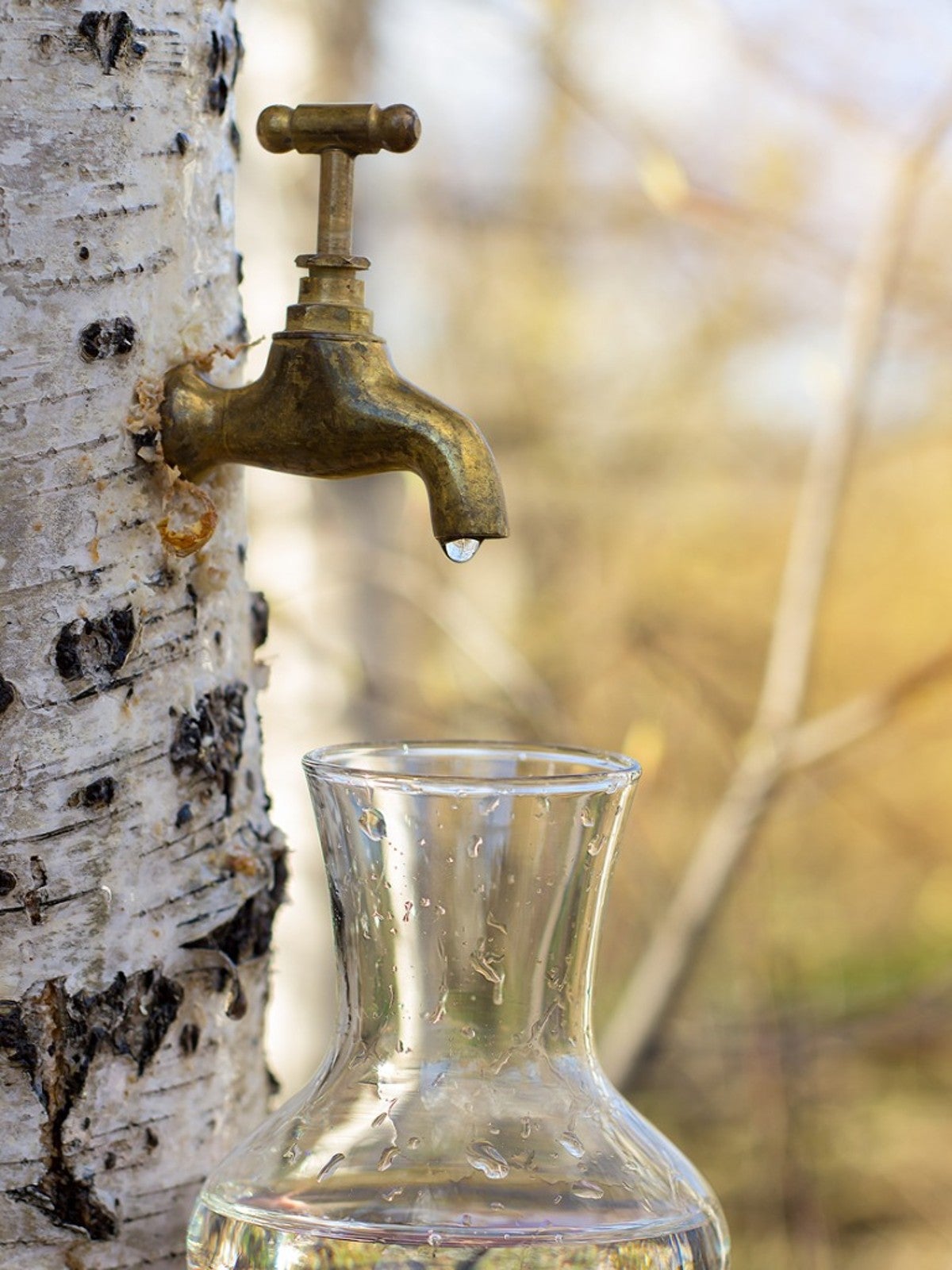How To Tap Birch Trees: Birch Syrup And Other Uses For Birch Sap


Most people have had or are familiar with maple syrup, the concentrated sap of maple trees, but did you know you can make birch syrup? Birch syrup can be made from paper birches and, while it takes some time, is surprisingly easy to do. Interested in how and when to tap birch trees for syrup? Read on to learn about birch sap harvest for syrup and other birch sap uses.
Birch Syrup Taste
Birches are hardwood trees commonly found in northern hardwood and boreal forests in areas of the northern hemisphere. The trees are tapped during the birch sap harvest, and then the sap is boiled to concentrate and caramelize the sugars. The result is delicious, albeit much different from maple syrup.
So how does birch syrup taste? The taste of birch syrup is described variously as reminiscent of raspberries, tart cherries, apple butter and molasses or as a combination of balsamic vinegar and molasses with a fruity nuance. Suffice it to say the consumer should not expect the sweet flavor of maple syrup, but something else entirely, with a unique flavor all its own.
Birch Sap Uses
Up until the end of the 19th century, a lack of food in the early spring called the “hunger gap” occurred in Europe. To fill the gap, northern Europeans drank the sweet sap of birches. The use of birch sap as a beverage was documented far earlier by the people of boreal and hemiboreal regions of the northern hemisphere as early as 921. (“Boreal” describes a region that has a northern temperate climate, with cold winters and warm summers.)
While birch sap is not high in vitamins, it is rich in minerals primarily calcium and potassium. It also contains antioxidants, sugar of course, vitamins C and B, and 17 amino acids; much more nutritious than plain water.
Birch sap is also used in cosmetics, wine, mead, vinegar, candy, birch beer and, of course, as syrup.
When to Tap Birch Trees
Birch sap harvest only occurs at the break between winter and spring when the sap begins to flow: just after the last frost but before the trees begin to leaf out. Birch sap harvest varies a bit depending upon location. In Eastern Europe, March is called “the month of sap” while in the more northern latitudes, April is when birch sap harvest begins.
Sign up for the Gardening Know How newsletter today and receive a free copy of our e-book "How to Grow Delicious Tomatoes".
How to Tap a Birch Tree for Syrup
Tapping a birch tree for syrup is a pretty simple process. Any birch tree can be tapped -- just remember that more sap will be needed to create the same amount as maple syrup since birch syrup is lower in sugar.
Drill a hole at an upward angle into the tree. The hole should be a half inch (1-2 cm.) to about 2 inches (2-6 cm.) in diameter, depending upon the thickness of the tree. The tree being tapped should be at least 10 inches (25 cm.) across. A single tree should yield around 1-2.5 gallons (5-10 L.) of sap per day.
Another way to tap a birch for syrup is to cut the end of a branch that is 2.5 inches (1 cm.) across. This method yields less sap but is less invasive. With either method be sure to seal the hole with wax or birch tar after tapping.

Teo Spengler is a master gardener and a docent at the San Francisco Botanical Garden, where she hosts public tours. She has studied horticulture and written about nature, trees, plants, and gardening for more than two decades, following a career as an attorney and legal writer. Her extended family includes some 30 houseplants and hundreds of outdoor plants, including 250 trees, which are her main passion. Spengler currently splits her life between San Francisco and the French Basque Country, though she was raised in Alaska, giving her experience of gardening in a range of climates.